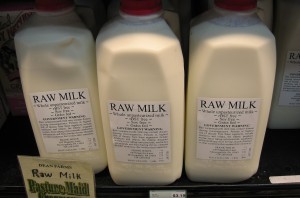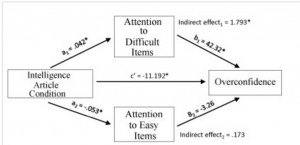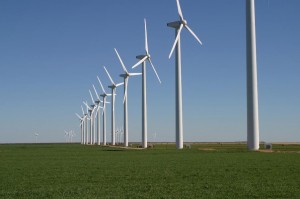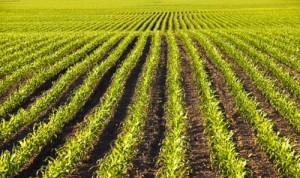Mar
10
2016
 Legislators in West Virginia passed a law legalizing the drinking of raw milk (but not the sale or distribution). Some of them drank raw milk to celebrate, and later came down sick with stomach symptoms.
Legislators in West Virginia passed a law legalizing the drinking of raw milk (but not the sale or distribution). Some of them drank raw milk to celebrate, and later came down sick with stomach symptoms.
This is one of those perfectly ironic stories that the internet loves. However, the lawmakers in question are denying that the milk is to blame. Instead they blame a stomach virus that has been going around their capital. A definitive answer is not yet available.
While the story is funny, it is irrelevant to the real question – is raw milk safe, and are there any health benefits beyond pasteurized milk? The answer to both questions is no.
Risks of Raw Milk Continue Reading »
Mar
08
2016
 People are overconfident. That is a clear signal in psychological research that is reliably replicated. At this point it can be taken as a given. The brain is a complex machine, however, and any one factor such as confidence interacts in multiple and complex ways with many other mental factors.
People are overconfident. That is a clear signal in psychological research that is reliably replicated. At this point it can be taken as a given. The brain is a complex machine, however, and any one factor such as confidence interacts in multiple and complex ways with many other mental factors.
Questions that have not been fully addressed include the possible causes and effects of overconfidence. Dunning and Kruger famously isolated one factor – overconfidence (the difference between self-assessment and actual performance) increases as performance decreases. This effect (called the Dunning-Kruger effect) is offered as one explanation for what causes overconfidence – the competence to assess one’s own competence.
A new series of studies looks at another factor that may influence overconfidence, ideas about the nature of intelligence itself. Joyce Ehrlinger and her colleagues performed three studies looking at the effect of two theories of intelligence on overconfidence. The two theories in question are the notion that intelligence is largely fixed (called the entity theory) vs the idea that intelligence is highly malleable (called the incremental theory).
Continue Reading »
Mar
07
2016
 Wind energy is on the rise as a clean renewable form of energy. It has many advantages – no carbon emissions (beyond construction of the turbines themselves), no pollution, no waste, and no use of limited resources. The three often-cited downsides of wind power are that the turbines can be an eyesore, they may cause symptoms in susceptible individuals (so-called wind turbine syndrome, WTS), and they can be a hazard to flying creatures.
Wind energy is on the rise as a clean renewable form of energy. It has many advantages – no carbon emissions (beyond construction of the turbines themselves), no pollution, no waste, and no use of limited resources. The three often-cited downsides of wind power are that the turbines can be an eyesore, they may cause symptoms in susceptible individuals (so-called wind turbine syndrome, WTS), and they can be a hazard to flying creatures.
The eyesore issue for me is not a big issue. I actually think wind turbines dotting the horizon look pretty, but even if you disagree that is a small price to pay for the advantages.
I’m a bird watcher, and so am very sensitive to the issue of protecting bird diversity. I wrote about this issue previously.
A review of scientific studies of the number of bird deaths caused by wind turbines estimates that 140,000 and 328,000 bird deaths are caused each year. This may seem like a lot, but a study published in 2013 concluded that domestic cats kill between 1.3 and 4.0 billion birds each year. Further, an estimated 100 million birds are killed each year by flying into windows.
This makes the number of birds killed by wind turbines a round-off error. Continue Reading »
Mar
04
2016
 What would happen if the US or the world banned the use of GMO (genetically modified organism) crops? A new study out of Purdue addresses that question.
What would happen if the US or the world banned the use of GMO (genetically modified organism) crops? A new study out of Purdue addresses that question.
The authors estimated the reduction in yields for corn, soybeans, and cotton if GM traits were abandoned. They then plugged the results into a well-established model of how much additional land would be needed to make up for that reduction in yield. They found:
Eliminating all GMOs in the United States, the model shows corn yield declines of 11.2 percent on average. Soybeans lose 5.2 percent of their yields and cotton 18.6 percent. To make up for that loss, about 102,000 hectares of U.S. forest and pasture would have to be converted to cropland and 1.1 million hectares globally for the average case.
The most significant environmental footprint of agriculture is land use. Every hectare (2.471 acres or 10,000 square meters) of forest or pasture that you convert to farmland increases carbon in the atmosphere contributing to global warming. Further, converting land to farmland reduces natural habitat or land for grazing.
Continue Reading »
Mar
03
2016
On February 29th Ken Ham posted on his Facebook page:
Intellectual child abuse: when kids are taught they’re just animals in an evolutionary process. This morning I taught kids the creation/gospel message!
The young people today in Alabama learned they’re not made in the image of an ape — they’re created in the image of God.
Ken Ham, as many likely know, is a young earth creationist. He believes in the literal truth of the Bible and therefore that the universe is 6,000 years old. This is an article of faith, but Ham also tries to support his faith with science, which means he gets the science entirely wrong. That’s what happens when you start with the answer and then work backwards.
Continue Reading »
 Legislators in West Virginia passed a law legalizing the drinking of raw milk (but not the sale or distribution). Some of them drank raw milk to celebrate, and later came down sick with stomach symptoms.
Legislators in West Virginia passed a law legalizing the drinking of raw milk (but not the sale or distribution). Some of them drank raw milk to celebrate, and later came down sick with stomach symptoms.
 People are overconfident. That is a clear signal in psychological research that is reliably replicated. At this point it can be taken as a given. The brain is a complex machine, however, and any one factor such as confidence interacts in multiple and complex ways with many other mental factors.
People are overconfident. That is a clear signal in psychological research that is reliably replicated. At this point it can be taken as a given. The brain is a complex machine, however, and any one factor such as confidence interacts in multiple and complex ways with many other mental factors. Wind energy is on the rise as a clean renewable form of energy. It has many advantages – no carbon emissions (beyond construction of the turbines themselves), no pollution, no waste, and no use of limited resources. The three often-cited downsides of wind power are that the turbines can be an eyesore, they may cause symptoms in susceptible individuals (so-called wind turbine syndrome, WTS), and they can be a hazard to flying creatures.
Wind energy is on the rise as a clean renewable form of energy. It has many advantages – no carbon emissions (beyond construction of the turbines themselves), no pollution, no waste, and no use of limited resources. The three often-cited downsides of wind power are that the turbines can be an eyesore, they may cause symptoms in susceptible individuals (so-called wind turbine syndrome, WTS), and they can be a hazard to flying creatures. What would happen if the US or the world banned the use of GMO (genetically modified organism) crops?
What would happen if the US or the world banned the use of GMO (genetically modified organism) crops? 




